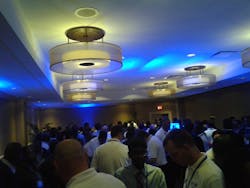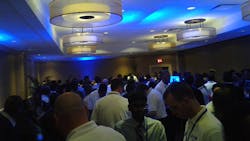How to Spot a Disruptor...the Good Kind
A good book to read to help spot Disruptors is called Serial Innovators: How Individuals Create and Deliver Breakthrough Innovations in Mature Firms written by Abbie Griffin, Raymond L. Price, and Bruce A. Vojak.
I would advise any engineer who develops new products to read this book, but I'm warning you that this book can feel creepy. The authors tell you why you think the way you do, your personal and professional traits, and why you did or didn't fit corporate policy. If you are wandering this Earth trying to understand why you seek to connect the dots -- this book is for you.
Here are some more examples from the book on how to identify a Serial Innovator:
1. Serial Innovators usually have a technical background and want to solve problems. (This is probably why you became an engineer.)
2. Although Serial Innovators make calculated risks, they feel doing nothing is a bigger risk. Because of this, they are willing to lose their job for a project.
3. Most Serial Innovators are politically naive, yet they know how to use the system to get their projects funded. They maneuver through the corporate structure by crossing different departments and organizations in order to get the idea validated and also to gain supporters.
4. If you’re a numbers person, here are some estimates on how many Serial Innovators are working in mature firms. A Serial Innovator could be one in every 50 employees of an R&D or engineering department at a smaller organization. One in 200 at a larger organization. And, one in 500 at most Fortune 200 companies.
5. And finally, Serial Innovators don't like to be called Serial Innovators because it sounds conceited. At the core of a Disruptor is a humanitarian.
At the end of the book the authors write personal letters to the people that hire or work with Serial Innovators. Therefore, please share this book with HR and the C-Suite if you haven't identified the Disruptors in your organization.
About the Author
Lindsey Frick - Big Idea Engineer
Strategist & Social Entrepreneur
Lindsey Frick is a Mechanical Engineer and Entrepreneur who develops strategies and ideas to solve big problems. She shares her research and experience on new technologies, materials, processes, funding models, and new markets in hopes to inspire other engineers and designers to think big.
Follow her on twitter @BigIdeaEngineer

